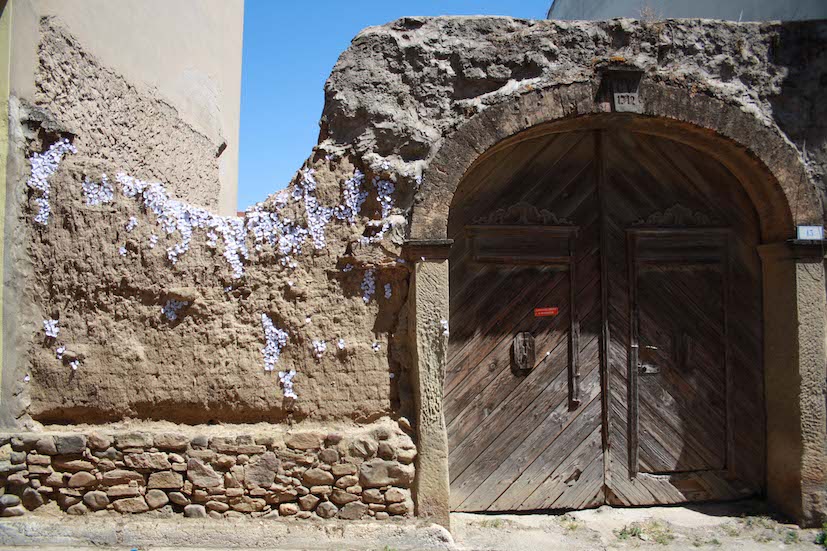
1912, 2013
Group exhibition (work produced during the art residency): ‘The Wall of Europe,’ Paese Museo, San Sperate, Sardinia, Italy, 2013
Site-specific installation
Manufactured lace and metal nails
A house that has been experienced is not an inert box. Inhabited space transcends geometrical space.
Gaston Bachelard, The Poetics of Space
The experience of happiness, wealth and intimacy transforms the functional geometry of the house. Inhabitation charges it with personal values and meaning with which we identify, which protects us and which we are ready to defend. Gaston Bachelard in The Poetics of Space argues that inhabitants learn to forget their fears in their domiciles; they embrace the intimacy of their abode set against the enmity and insecurity of the outside. The familiar, the recognisable, our house can become our entire world, which seems besieged by vague perilous forces. A dichotomy of ‘us’ against ‘them’ can arise, which instead of protection offers confinement.
Once produced industrially, lace was frequently used to cheaply manufacture curtains and lingerie. According to Beverley Gordon, the usage of lace as window treatments ‘reflected the greater permeability that existed between the “outside world” and the home’ at the beginning of the twentieth century. Lace was translucent yet also associated with lingerie and, therefore, with the female body and with the privacy of the house.
In 1912 a wall spiked with lace emphasises the disappearance of an already eroded wall of a house build in that year at a time when lace was in fashion. While it stresses the fragility and beauty of the wall, the lace on the exterior of a house is an inclusive device, it doesn’t shield but invites the outsider, assuming a friendlier cosmos. 1912 is also a reminder of a more permeable world.
G. Bachelard, The Poetics of Space, (Massachusetts, 1994).
B. Gordon, Woman's Domestic Body: The Conceptual Conflation of Women and Interiors in the Industrial Age, Winterthur Portfolio, Vol. 31, No. 4, Gendered Spaces and Aesthetics (Winter, 1996), pp. 281-301.